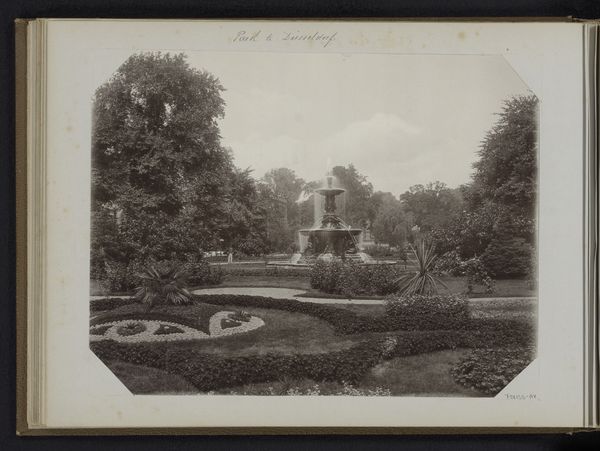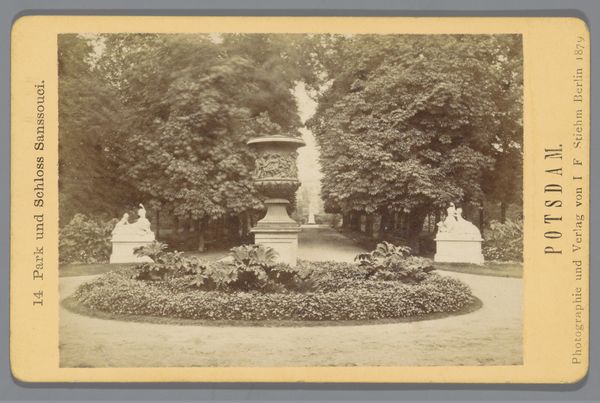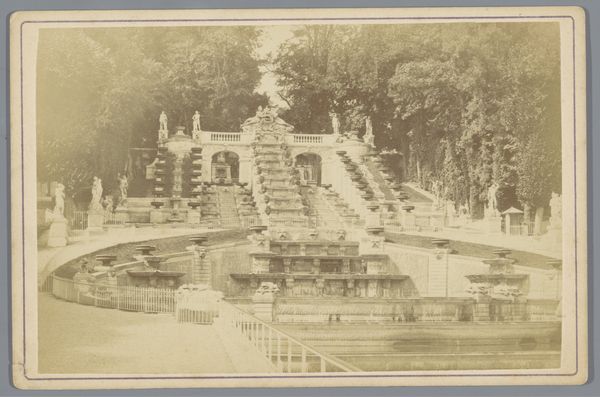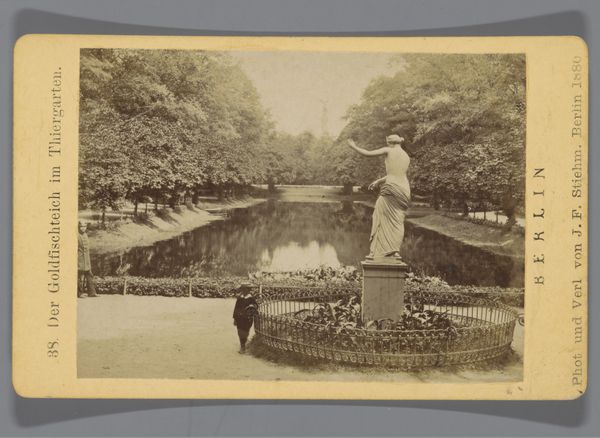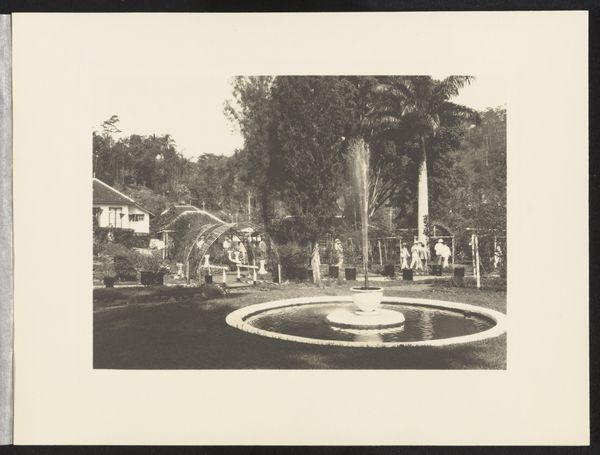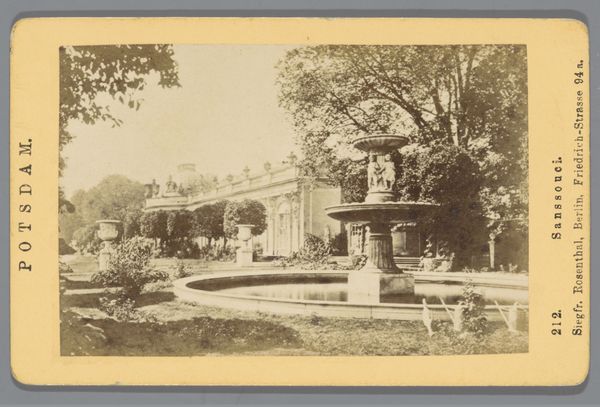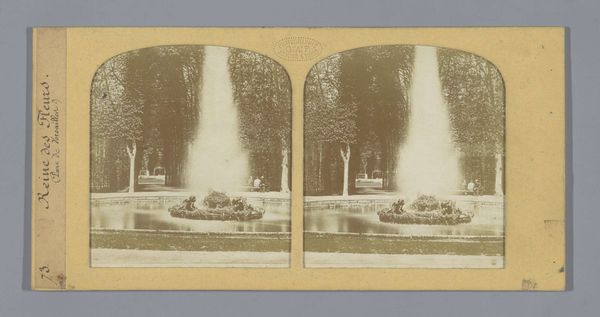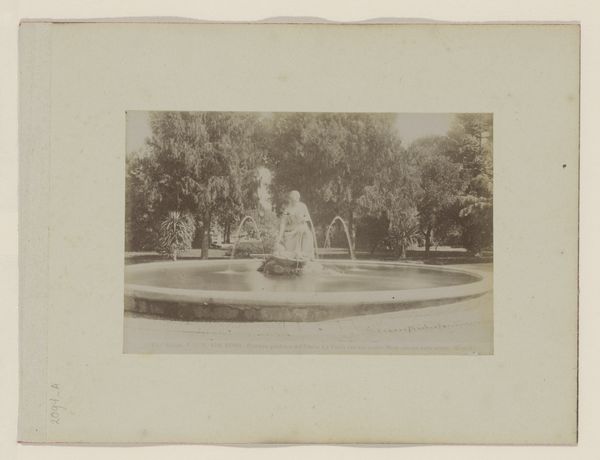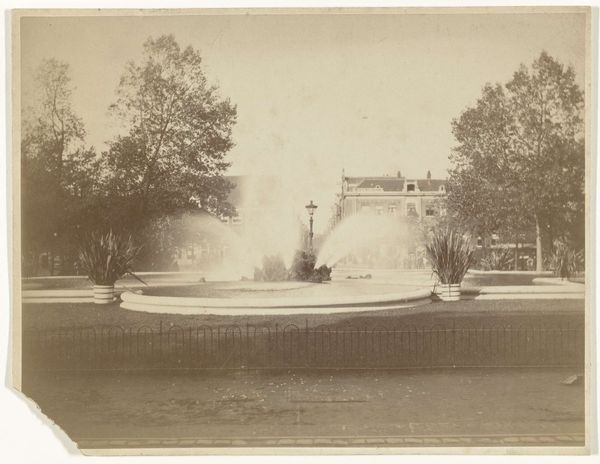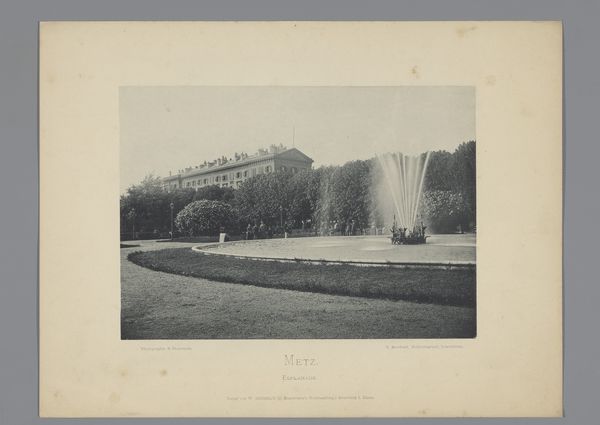
Dimensions: height 196 mm, width 244 mm
Copyright: Rijks Museum: Open Domain
Curator: This is "Fontein (vermoedelijk) te Rome," a gelatin silver print by Gustave Eugène Chauffourier, created sometime between 1875 and 1900. Editor: The way the light falls on the cascading water is quite mesmerizing. There's a dreamlike quality to the image, despite the stark realism achieved through the photographic medium. Curator: Indeed. Consider how the technical constraints of early photography might have dictated the artistic choices. The extended exposure time, necessary to capture sufficient light, renders the water in motion with a soft, ethereal blur. Editor: That softness contrasts wonderfully with the solidity of the sculptural elements in the fountain. One thinks of the skilled labour, from the quarrying of stone to the elaborate carving. Was Chauffourier making a subtle commentary on craft, perhaps, against the rise of industrial reproduction? Curator: A fascinating point. However, I believe the emphasis here lies in the juxtaposition of the static architecture with the ephemeral flow of water, capturing a sense of timeless beauty, an idealized Roman landscape through light and shadow. The formal arrangement is precise, carefully balanced and deeply rooted in pictorial conventions. Editor: But doesn’t the very nature of photography inherently democratize image-making? Gelatin silver prints were becoming more accessible. And landscape itself carries an embedded social component as a contested space, shaped by class and politics... Curator: Perhaps, but observe how Chauffourier deliberately eschews the gritty realities of urban life, favoring instead an almost pastoral vision, harking back to romantic notions of classical antiquity and an aesthetic vision firmly within Realism, and yes, echoes of Romanticism. Editor: All the same, one cannot help but wonder about the lived realities that produced this image; of darkrooms and developing chemicals and perhaps even the social stratification within photography itself as an emerging profession. Curator: A valid counterpoint to my analysis, suggesting new avenues for interpretation. It truly demonstrates how multifaceted a seemingly straightforward landscape photograph can be. Editor: Exactly, each element reflects tangible human effort. Let’s look more at that as we consider the other works.
Comments
No comments
Be the first to comment and join the conversation on the ultimate creative platform.

